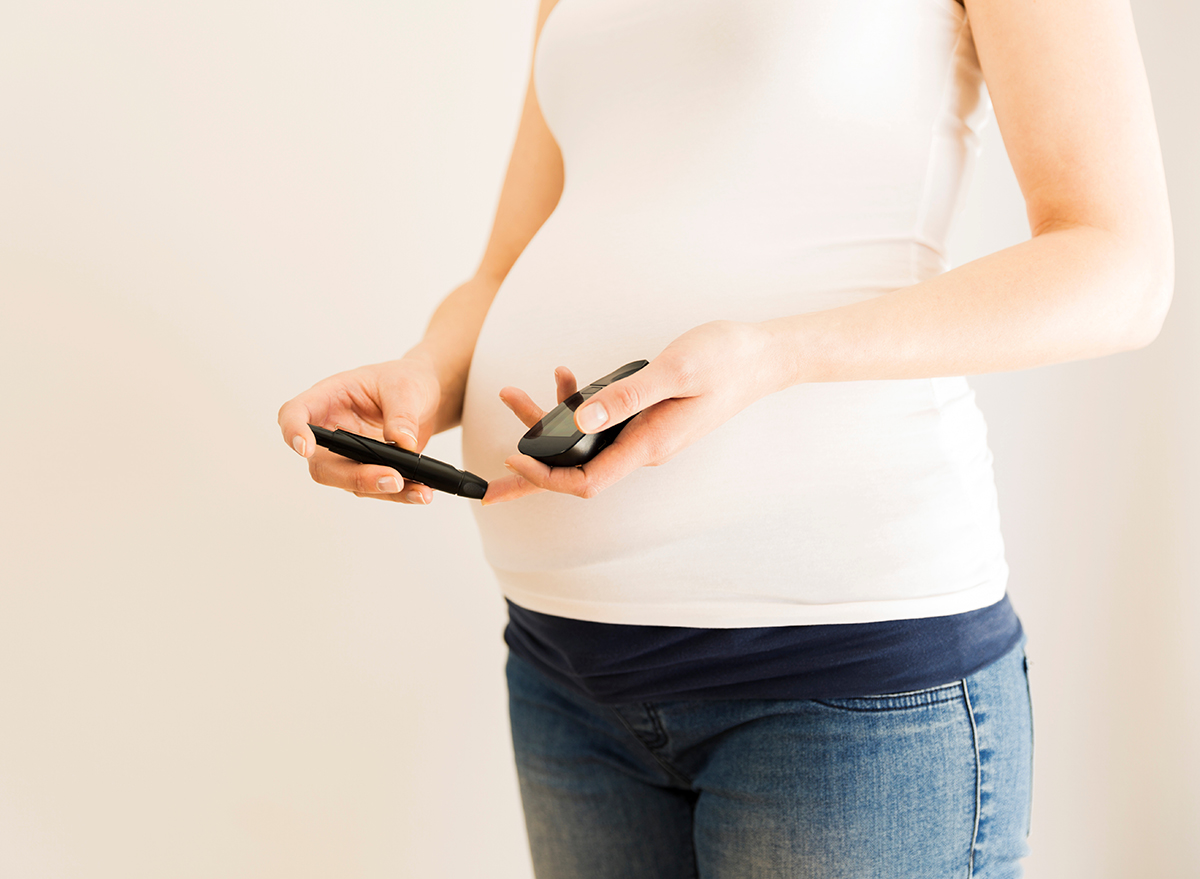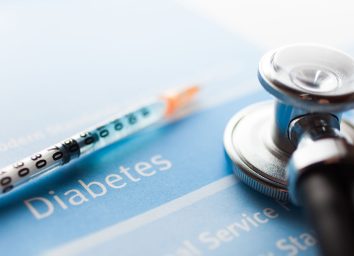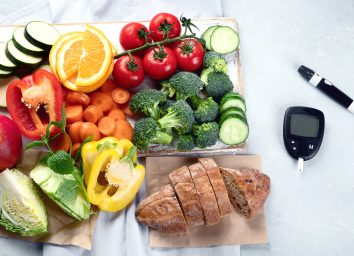What Your Diet Should Look Like If You Have Gestational Diabetes, According to an RD

Diabetes is a prevalent issue worldwide, but especially so in the United States, where an estimated 9.4 percent of the population—about 30.3 million Americans—have the condition, according to the CDC. Between 90 and 95 percent of those cases are type 2 diabetes, which is primarily caused by poor diet and obesity. While type 1 and type 2 diabetes are the forms of diabetes that get a substantial amount of media coverage, there’s a lesser-known type of diabetes that occurs only during pregnancy—gestational diabetes.
Maryann Walsh, MFN, RD, CDE, gave us further insight into what gestational diabetes is, as well as which foods are best to eat while experiencing the condition.
What is gestational diabetes?
“Gestational diabetes is when blood sugar levels are elevated during pregnancy,” says Walsh. “Testing for gestational diabetes is usually done around weeks 24 and 28 of pregnancy, as this is when hormonal levels may cause insulin resistance.”
Insulin resistance is what people with type 2 diabetes experience. Essentially, the pancreas struggles to produce enough insulin necessary to transfer glucose (sugar) in the blood to cells. Cells need glucose for energy, otherwise, they become starved. Additionally, this unabsorbed, excess glucose begins to build up in the bloodstream causing hyperglycemia, the state in which blood sugar levels become too high.
According to the CDC, gestational diabetes in women can often be controlled through diet and exercise. However, there are some cases that require insulin injections.
What would a woman’s blood sugar levels look like if she has gestational diabetes?
First, it’s important to identify what healthy blood glucose levels look like.
“The target number for blood sugar is less than 95 mg/dl when fasting or before a meal [and] 120 mg/dl is the target to stay under two hours after a meal,” says Walsh. “The target number for A1C (a 2-to-3-month blood glucose average) is less than 6.0 percent.”
Testing blood glucose levels after a night of sleep, or several hours without food, and after a meal are both important measures in determining whether or not one has diabetes. After you eat a meal, blood glucose levels innately rise as the body begins to digest the food. However, if blood glucose levels remain high several hours after eating, this may be indicative of insulin resistance.
“When a woman’s blood sugar levels exceed these [levels] consistently, this range indicates gestational diabetes,” says Walsh.
What are some gestational diabetes symptoms?
Symptoms of gestational diabetes include:
- Excessive thirst (polydipsia)
- Excessive urination (polyuria)
- Blurred vision
- Frequent yeast infections
There are several risk factors for gestational diabetes as well, including:
- Being over the age of 25
- A history of diabetes or family history
- Being overweight or obese
- Pre-existing conditions such as hypertension
What is the connection between macrosomia and gestational diabetes?
Fetal macrosomia is the term used to describe a newborn baby who weighs more than 8 pounds 13 ounces. Women with gestational diabetes are at higher risk of giving birth to a larger baby. Babies who exceed average birth weight are at greater risk of health complications later in life.
“Extra glucose circulating through the mom’s bloodstream crosses into the placenta, which can cause the fetus’ pancreas to make more insulin, leading to more growth and a larger baby,” says Walsh.
What would an appropriate gestational diabetes diet look like?
“Diabetes, whether gestational or not, looks different for everyone,” says Walsh. “The best way to assess your dietary needs is to monitor your blood glucose regularly with an at-home test kit. This way you can gain insight into which foods spike your blood sugar the most.”
So regularly eating foods that are high in added sugars is not suggested. Eating meals that have a balance of macronutrients (carbs, fats, and protein), are portion-controlled, and are eaten at consistent times daily will help to keep blood sugar levels regulated.
“Calorie needs will slightly change from trimester to trimester,” she says. “However, a pregnant woman usually only needs on average an extra 350-500 calories by the final trimester, so ‘eating for two’ is a bit of a myth.”
What foods should women avoid if they have gestational diabetes?
Walsh says while there aren’t any foods that should be entirely eliminated from the diet, there are some that should be limited over others. Here are a few examples.
Foods to limit:
Foods to eat more of:
- Whole grains
- Non-starchy veggies (broccoli, leafy greens)
- Lean protein (fish, poultry)
- Healthy fats (nuts, salmon)
Can gestational diabetes turn into type 2 diabetes post-pregnancy?
Walsh says that blood sugar levels typically resume to normal levels after about four to six weeks post-childbirth.
“While there is an increased chance of developing type 2 diabetes post-pregnancy, it’s not a guarantee and can be prevented with diet, exercise and lifestyle choices,” she adds.








